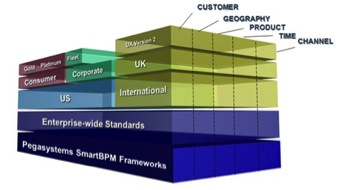PEGA BPM facilitates business-IT collaboration throughout the BPM project lifecycle. Business-friendly forms and visual tools capture every aspect of how work gets done—from process to user interfaces, rules, and integration.
What you see is what you get. Pega BPM automatically translates business requirements into finished applications—completely eliminating manual programming. And when requirements change, you can directly update your solution, eliminating the time and cost of hand-coded system maintenance.
Pega BPM doesn’t just simplify work, it automates it. Pega BPM receives and routes work across multiple channels and organizational silos, reports and charts work progress, researches relevant data, responds optimally, and automatically resolves work when possible.
Pega BPM efficiently delivers repeatable, differentiated solutions by first capturing elements that are common and shared, and then specializing them to meet the diverse needs of your business. The Pega Situational Layer Cake™ automatically tailors processes to match the current situation, adjusting the solution by any number of dimensions, such as customer type, product, channel, department, geography, language and time.
The rapid proliferation of mobile devices and social channels creates opportunities for companies to better serve customers and empower employees wherever they go. Pega Omni-Channel UX™ is a responsive, standards-based UI that reduces the time and cost to design and deploy today’s multi-channel applications.
On-premises or in Pega Cloud, Pega BPM simplifies integration with systems of record and delivers secure, scalable, and highly available BPM applications.


